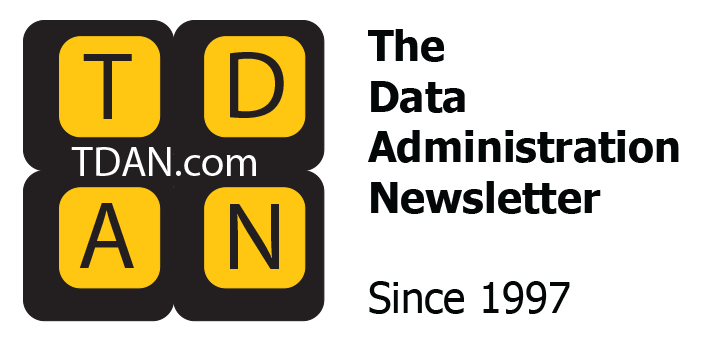
In today’s interconnected business landscape, sharing data with third-party partners is often essential for operational success. However, this exchange of information introduces risk, especially if partners fail to uphold the same security standards. Understanding the types of data shared, identifying which data is most at risk, and evaluating the biggest threats to third-party breaches are critical to organizations with compliance obligations. This can include proactively implementing rigorous safeguards such as joint contracts, auditing partner procedures, and ensuring partners adhere to robust data protection practices, securing sensitive information at every stage of the joint relationship.
Types of Data Shared
Organizations share a broad spectrum of data, with varying degrees of sensitivity. Jim Russell, CIO of Manhattanville College, points out that companies often do not fully understand the extent of the data they share. This data can range from basic directory information to more sensitive data like PII. A more recent business concern is the risk surrounding qualitative data, such as meeting notes or documents, that may now be shared with generative AI or similar “shadow AI” tools, often without complete disclosure.
In transition CIO Martin Davis highlights that the type of service being provided significantly impacts the nature of data sharing. For instance, insurance companies often share considerable amounts of PII to verify identities. Dion Hinchcliffe, Vice President of CIO Practice, The Futurum Group, expands on this by noting that data from systems like CRM or ERP, which can include both PII and IP, is commonly shared with partners and customers. These types of data — PII, IP, and strategically important business information — are at the highest risk for inadvertent disclosure. For example, in August of this year, Toyota confirmed that customer data was exposed in a third-party data breach after a threat actor leaked an archive of 240GB of stolen data on a hacking forum.
Risks from Data Sharing
The biggest risks to data being released by a third-party center around privacy violations, legal consequences, and reputational damage. In sectors like healthcare, where PHI and PII are heavily regulated under frameworks like HIPAA, breaches can expose organizations to legal penalties and financial losses. Hinchcliffe argues the biggest data sharing risks are:
- Privacy breach
- IP loss/theft
- Legal + compliance risks
- Reputational impact
- Loss of control
Clearly, the stakes are high dependent on the data involved. Davis says, “The risks can be huge depending on the data, including reputational and monetary loss.” When employees’ or clients’ identities and financial information are leaked, organizations face both direct risks in the form of financial losses and indirect risks in the form of reputation damage. Key risks to be wary of include breaches of privacy, theft of intellectual property, and significant legal and compliance liabilities. Beyond this, the loss of trust and control over critical data can result in long-term reputational harm, which can jeopardize an organization’s future. Hence, there is a growing emphasis on roles like the Chief Privacy Officer, dedicated to mitigating these risks.
Actions to Take
To minimize the risks associated with third-party data sharing, CIOs must take a multifaceted approach that includes joint contracts, robust auditing practices, and implementing continuous security measures. One key strategy is ensuring traceability and data lineage, which helps track the flow of data across systems. Compartmentalization and data security measures, such as encryption, can protect sensitive information, while auditing procedures ensure partners adhere to agreed-upon standards. A comprehensive Data Loss Prevention (DLP) strategy is crucial to preventing accidental or malicious leaks.
Regular audits and assessments of third-party vendors are critical to ensuring compliance with cybersecurity standards. CIOs should require vendors to undergo rigorous pre- and post-engagement audits, as well as periodic reviews during the partnership. These should be backed by contractual agreements with real financial consequences for non-compliance. However, as Davis highlights, the biggest challenge is the inherent limitation in fully verifying a supplier’s security posture. Therefore, it is crucial to build in clauses for continuous monitoring and regular security evaluations, such as incident response testing.
Finally, once a vendor relationship ends, CIOs must have auditable assurances that the vendor has wiped any data no longer required under legal and regulatory obligations. Vendors should be held accountable for these processes through transparent communication, certifications, and compliance with industry standards. Yet, as Russell notes, trust remains the central issue. Balancing vendor partnerships with fewer, more trustworthy providers can reduce the burden of oversight, but may not be feasible for all organizations depending on their business needs.
Ensuring Equal Care
CIOs can work to ensure that partners protect data with equal care by implementing a robust vendor management strategy that emphasizes continuous oversight, accountability, and transparency. One critical step is adopting a “Know Your Vendor” framework, as Russell suggests, which involves a deeper vetting process, reviewing vendor practices, and maintaining an ongoing dialogue around data protection standards. CIOs should attend privacy sessions, thoroughly review contracts, and make it clear to partners that failing to meet expectations will lead to termination of the relationship.
Additionally, clear contractual agreements are essential. These should include data protection mechanisms, strict data handling requirements, and well-defined fair use clauses. Regular audits and continuous monitoring of partners are crucial to verify compliance with these terms. As Davis notes, there will always be trade-offs between risk management and cost, so it’s vital for CIOs to make informed decisions based on these factors, while recognizing that 100% certainty is unattainable. Ultimately, a combination of trust and verifiable oversight will provide the best approach to ensuring partners treat data with the care it deserves.
Parting Words
Preventing third-party data breaches demands a proactive, strategic approach beyond the organization’s scope. CIOs must ensure partners meet strict data protection standards through contracts, audits, and accountability. Given the varying sensitivity of shared data, especially in regulated industries, a strong vendor management system focused on security and trust is crucial. While no system is foolproof, combining risk management, continuous monitoring, and enforcing penalties for non-compliance is essential to safeguarding sensitive data and maintaining trust. This also includes demonstrating to auditors that all necessary measures have been taken to protect customer information.
